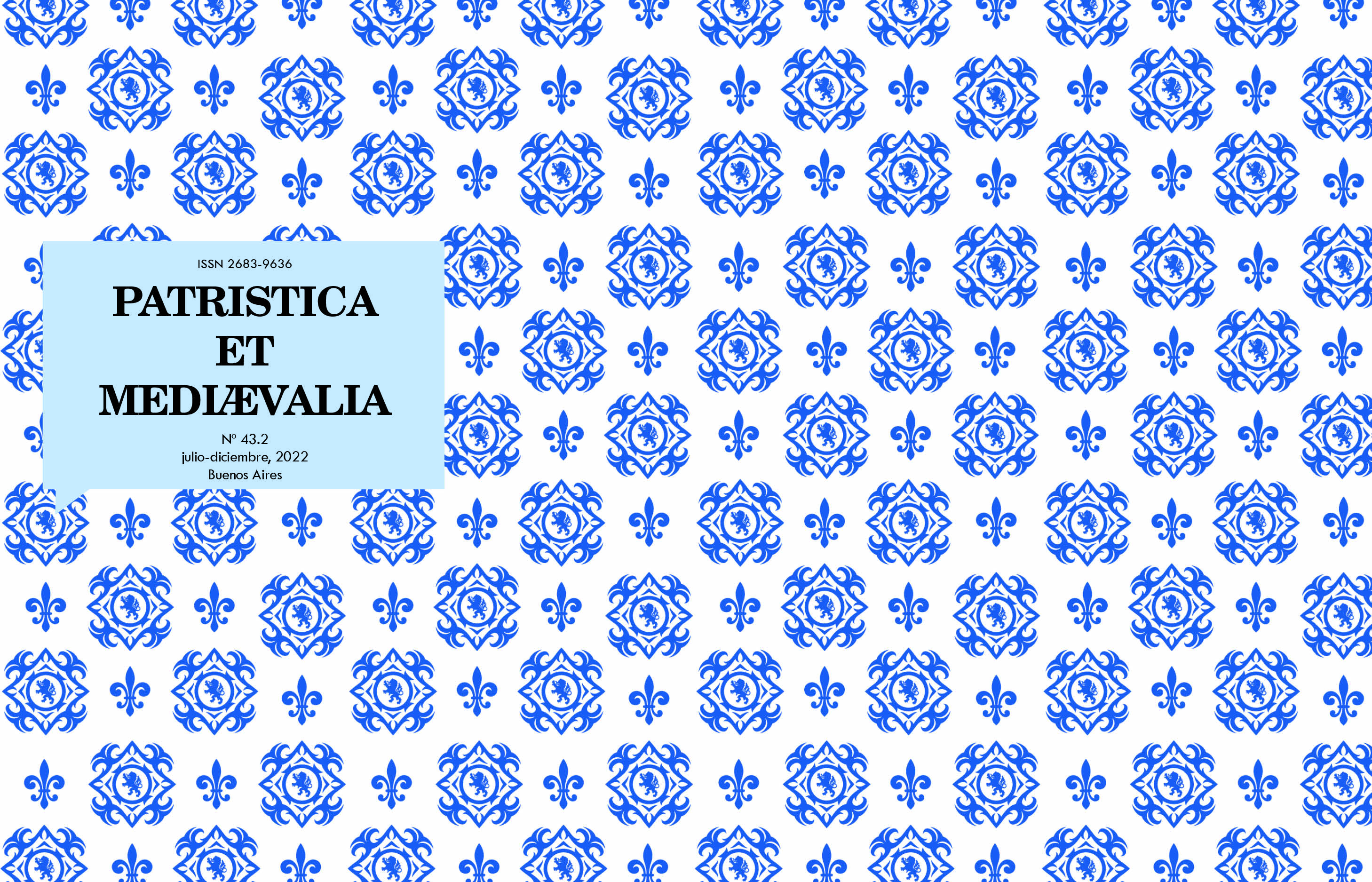An aesthetic approach to the aequalitas in Augustine of Hippo’s De musica
Abstract
The concept of aequalitas articulates Augustine of Hippo’s analysis in his dialogue De musica. Augustine begins with the technical study of the rhythm of Latin verses in order to organize the metrical feet according to their closeness to equality. Closeness to equality is the criterion of delight, namely, the response of the senses to simple proportions. The rational analysis of the aesthetic experience initiates the ascent of the soul towards God, identified as the foundation of beauty and delight in proportionate and beautiful things. This passage from music theory to the theological philosophy of music articulates an aesthetic theory that addresses aesthetic experience and reflection on this experience. The three moments of the dialogue allow us to understand the concept of aequalitas according to three perspectives: arithmetic, aesthetic and theological. Arithmetic equality is the relationship between two equal quantities. Aesthetic equality is the relationship between the quantities of temporal reality insofar as they are perceived and with respect to their beauty. Finally, theological equality is a supreme equality, divine and without multiplicity.Downloads
References
Agustín de Hipona (2007). Sobre la música. Trad. Luque Moreno, J. y López Eisman, A. Madrid: Gredos.
Augustinus Hipponensis (1892). De natura boni. Ed. Zycha, J. Leipzig: G. Freytag. (CSEL 25/2).
Augustinus Hipponensis (1962). De doctrina christiana. De vera religione. Ed. Daur, K. D. y Martin, J. Turnhout: Brepols. (CCSL 32).
Augustinus Hipponensis (1970). De ordine. Ed. Green, W. M. y Daur, K. D., Turnhout: Brepols. (CCSL 29).
Augustinus Hipponensis (1984). Retractationum libri II. Ed. Mutzenbecher, A. Turnhout: Brepols. (CCSL 57).
Augustinus Hipponensis (1986). De quantitate animae. Ed. Hörmann, W. Leipzig: G. Freytag. (CSEL 89).
Augustinus Hipponensis (2009). Epistulae CI-CXXXIX. Ed. Daur, K. D. Turnhout: Brepols. (CCSL 31B).
Augustinus Hipponensis (2017). De musica, Ed. Jacobssen, M. Berlín: De Gruyter. (CSEL 102).
Baumgarten, A. G. (1900). Meditationes philosophicae de nonnullis ad poema pertinentibus. Ed. Croce, B. Vecchi.
Bai, J. (2017). “Numbers: Harmonic Ratios and Beauty in Augustinian Musical Cosmology”, Cosmos and History: The Journal of Natural and Social Philosophy 13.3, 192-217.
Belgrano, M. (2016). “Itinerario del alma hacia Dios por medio de la Belleza desde las Confesiones de San Agustín”, Sapientia 72.239, 165-179.
Casas Rastrepo, F. (2016). “¿Es el De Musica de San Agustín un tratado sobre el arte musical?”, Franciscanum 58.166, 117-145.
Charru, P. (2009). “Temps et musique dans le pensée d’Augustin”, Revue d’Études Augustiniennes et Patristiques 55.2, 171-188. DOI: 10.1484/J.REA.5.101044.
Correa Pabón, G. L. (2009). Numerus-proportio en el De musica de San Agustín (Libros I y VI). La tradición pitagórico-platónica. Salamanca: Universidad de Salamanca.
De Bruyne, E. (1963). Historia de la Estética II. La Antigüedad cristiana. La Edad Media. Madrid: BAC.
Ellsmere, P. (1988). “Augustine on Beauty, Art and God”. En: La Croix, R. (ed.). Augustine on Music. An Interdisciplinary Collection of Essays. Nueva York: The Edwin Mellen Press, 97-113.
Forman, R. (1988). “Augustine’s Music: ‘Keys’ to the Logos”. En: La Croix, R. (ed.). Augustine on Music. An Interdisciplinary Collection of Essays. Nueva York: The Edwin Mellen Press, 17-28.
Hadot, I. (1984). Arts libéraux et philosophie dans la pensée antique. París: Études Augustiniennes.
Hoenig, C. (2018). Plato’s Timaeus and the Latin Tradition. Cambridge: Cambridge University Press.
O’Daly, G. (1987). Augustine’s Philosophy of Mind. Berkeley: University of California Press.
Polmann, K y Vessey, M. (2005). Augustine and the Disciplines. From Cassiciacum to Confessions. Nueva York: Oxford University Press.
Rey Altuna, L. (1986). “Fundamentación ontológica de la belleza”, Anuario filosófico 19.1, 105-134.
Shanzer, D. R. (2005). “Augustine’s disciplines: Silent diutius Musae Varronis?”. En: Polmann, K. y Vessey, M. (eds.). Augustine and the Disciplines. From Cassiciacum to Confessions. Nueva York: Oxford University Press, 69-112.
Tashchian, A. (2014). “Numerus as the Metaphysical Principle in St. Augustine’s Doctrine of Rhythm”, Laval Théologique et Philosophique 70.2, 331-342.
Tatarkiewicz, W. (2007). Historia de la estética. II. La estética medieval. Madrid: Akal.
Wiskus, J. (2016). “Rythm and Transformation Through Memory: On Augustine’s Confessions after De musica”, The Journal of Speculative Philosophy 30.3, 328-338. DOI: 10.5325/jspecphil.30.3.0328.
1. The authors who publish in this magazine accept the following conditions:
-
They retain the copyright and grant to the magazine the right of the first publication, with the work registered under the Attribution-ShareAlike 4.0 International License that allows third parties to use what is published as long as they mention the authorship of the work and the first publication in this magazine.
-
They can make other independent and additional contractual agreements for the non-exclusive distribution of the version of the article published in this magazine (eg. include it in an institutional repository or publish it in a book) provided that they clearly indicate that the work was first published in this journal.
-
They are allowed and recommended to publish their work on the Internet (for example on institutional or personal pages).
2. AutoArchive Conditions. Authors are allowed and encouraged to distribute post-print electronic versions of their manuscripts because it promotes their circulation, a possible increase of quotation and a major reach among the Academic community. Color RoMEO: blue.













